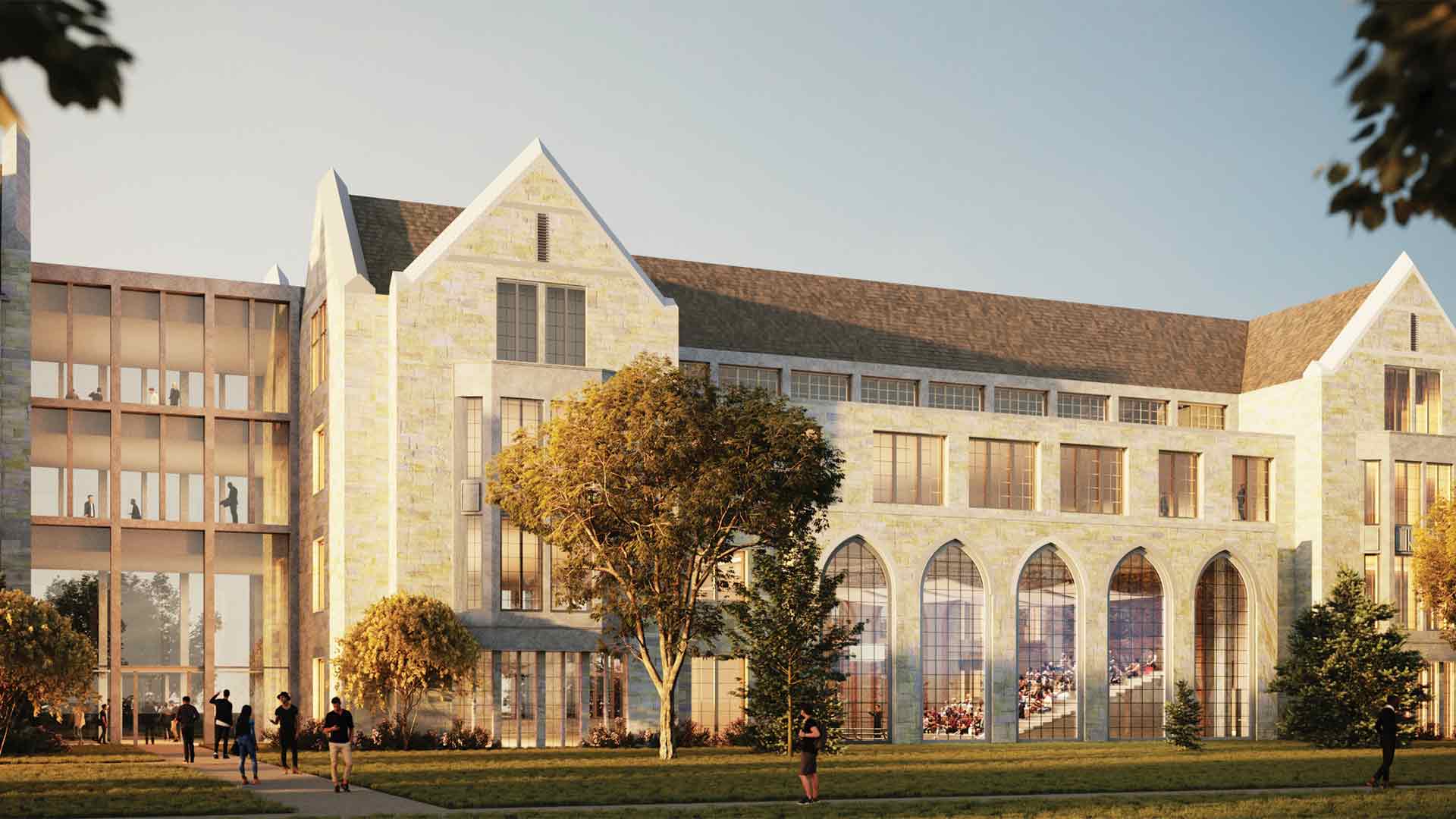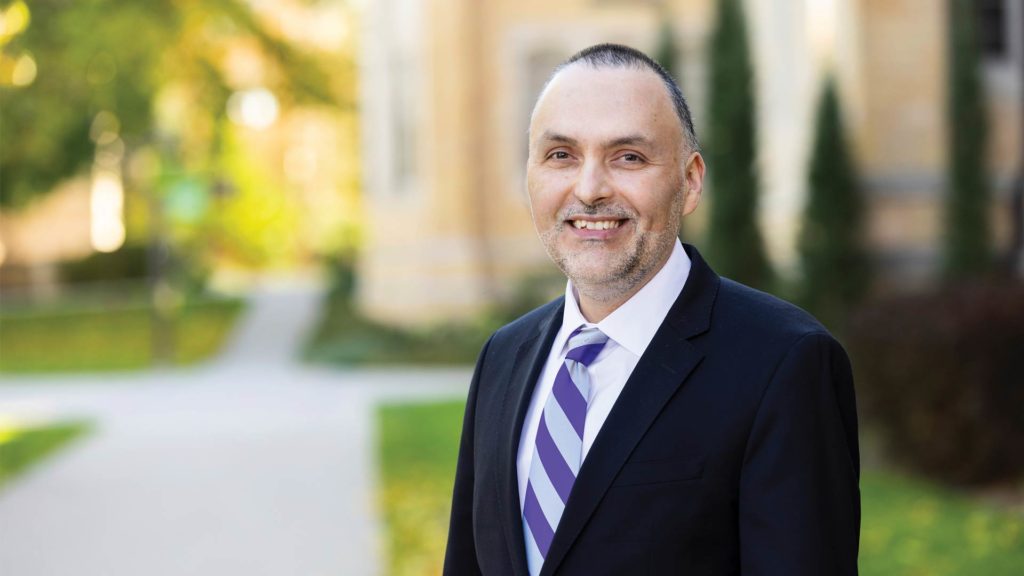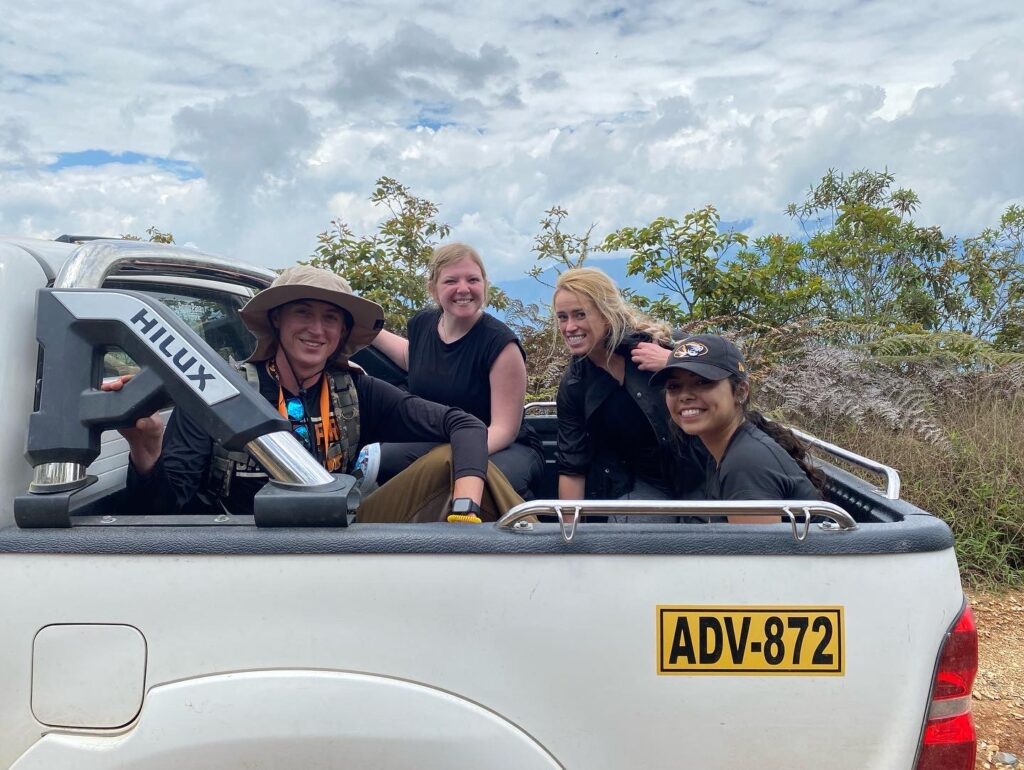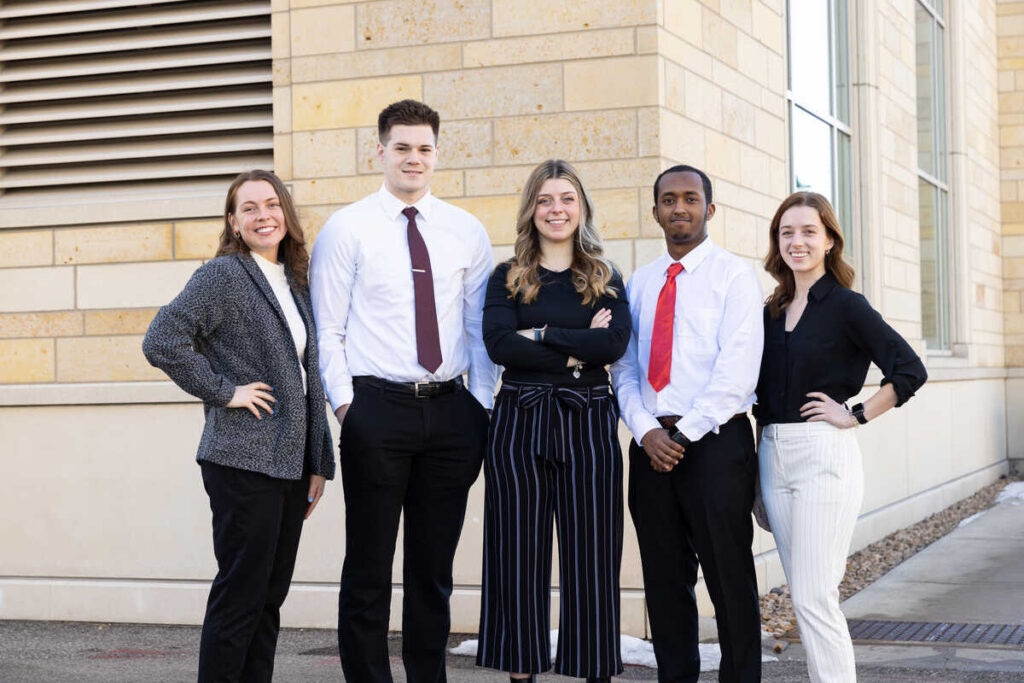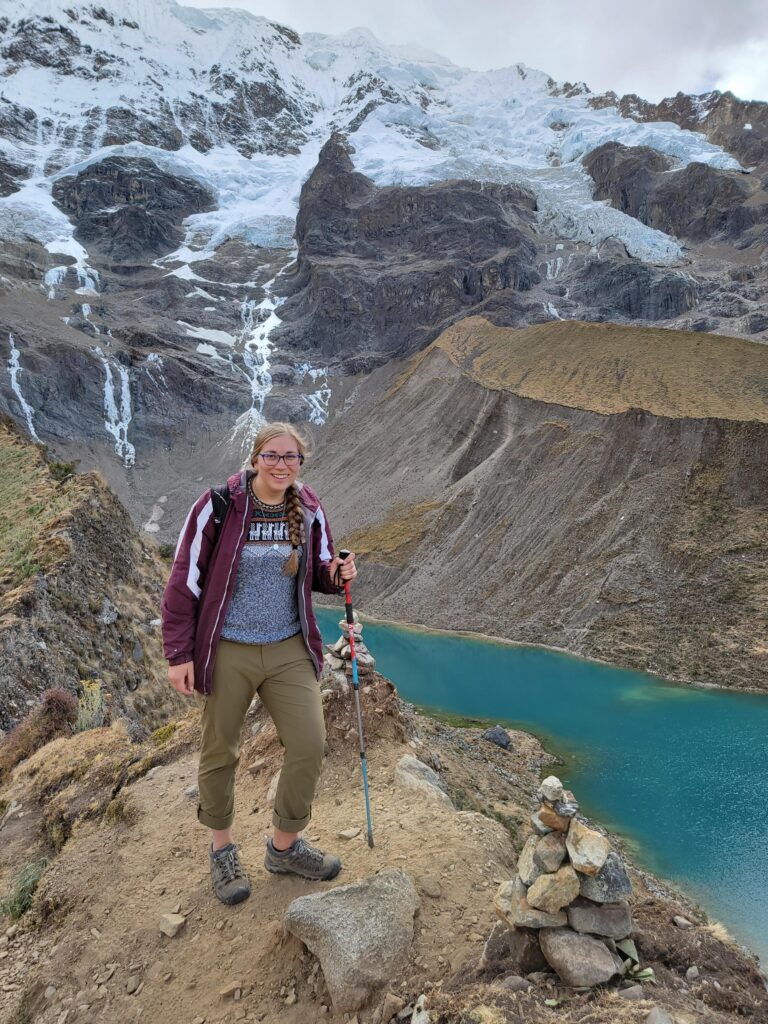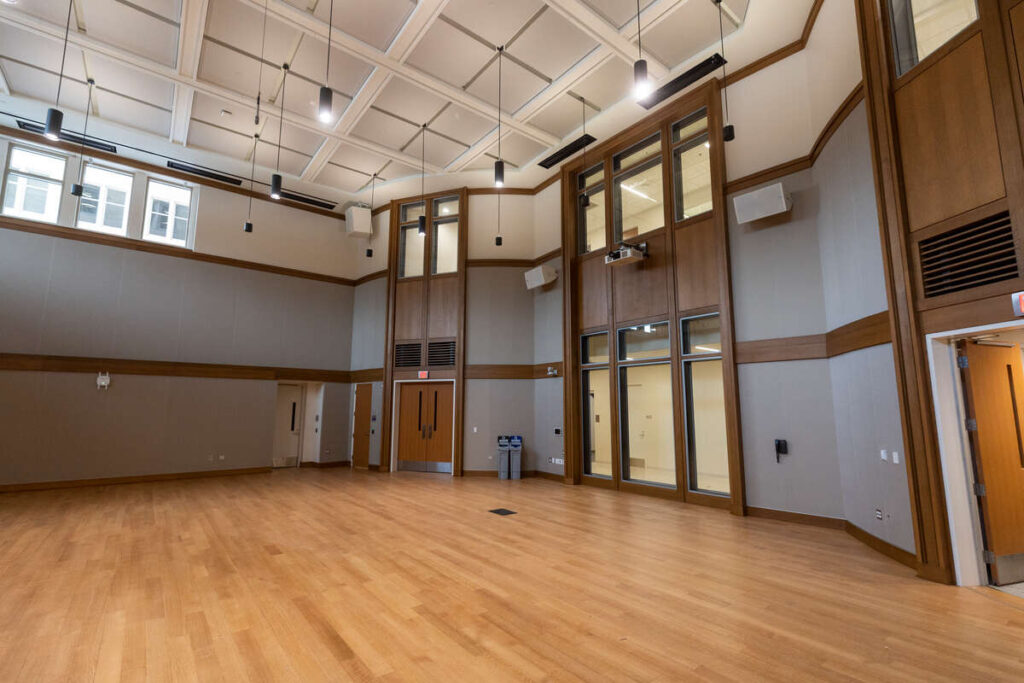St. Thomas breaks ground on $110 million STEAM complex; the integrated facility will showcase science, technology, engineering, arts and math.
St. Thomas breaks ground in May on the Schoenecker Center, a $110 million state-of-the-art complex that aims to transform south campus by adding a world-class STEAM (science, technology, engineering, arts and math) complex targeted to open in 2024.
The building will feature five levels of modular, multipurpose spaces and wide corridors and is expected to add more than 130,000 square feet of facilities to the university.
Housing three academic areas (arts, engineering and sciences), it will include the emerging media newsroom, studios and classrooms, science and engineering labs and offices; an art gallery; a 250-seat choral rehearsal and performance space; an instrumental rehearsal space and storage; St. Thomas’ Centers for Artificial Intelligence, Data Science and Water Justice; visitor lobbies, café and community spaces.
“This will be the first building of its kind in the Twin Cities that will be welcoming to all in serving both our students and the community in STEM and arts education, ultimately inspiring and educating a diversity of ‘principled, creative problem-solving leaders’ who will fuel the talent pipeline for Minnesota and beyond,” Vice President for University Advancement Erik Thurman said.
The planned addition will allow St. Thomas to further recruit, retain and support women, Black, Indigenous, and people of color in STEAM fields, said President Julie Sullivan. “The best way to do that is by breaking down silos, focusing on collaborative, interdisciplinary education, and incorporating diverse viewpoints.”
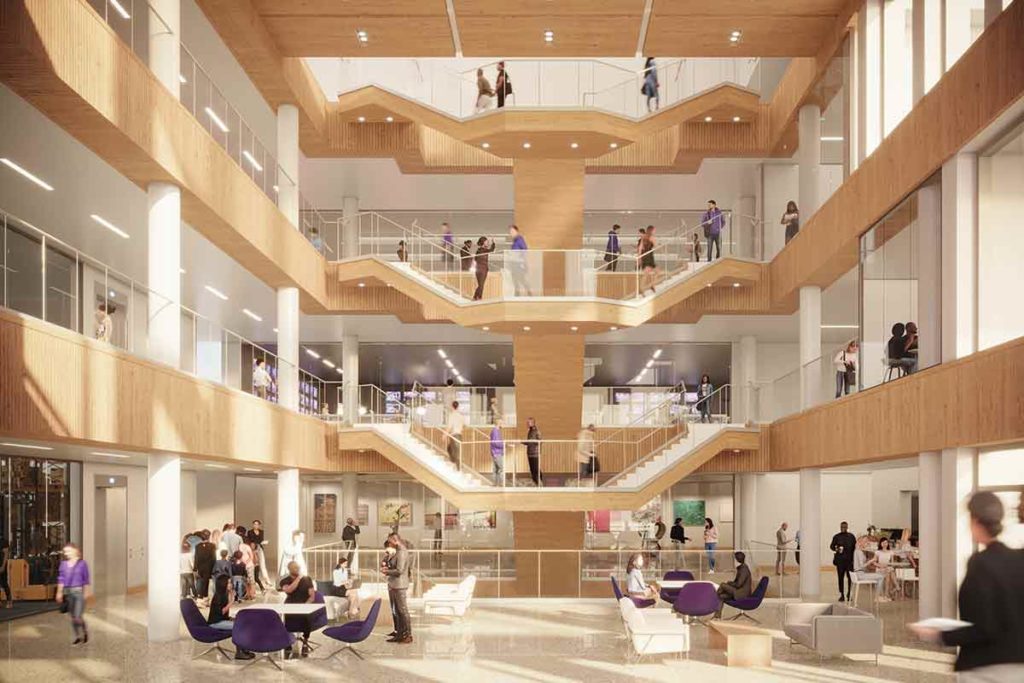
The atrium
“The hub of most
activity is actually
outside of the
classroom. It’s in the
hallways, it’s in the
collaboration hubs,
it’s in these bridges
that connect all of
the disciplines,” Dean
Weinkauf said.
As one of the youngest engineering programs in the nation, we are building something truly special here in Minnesota.
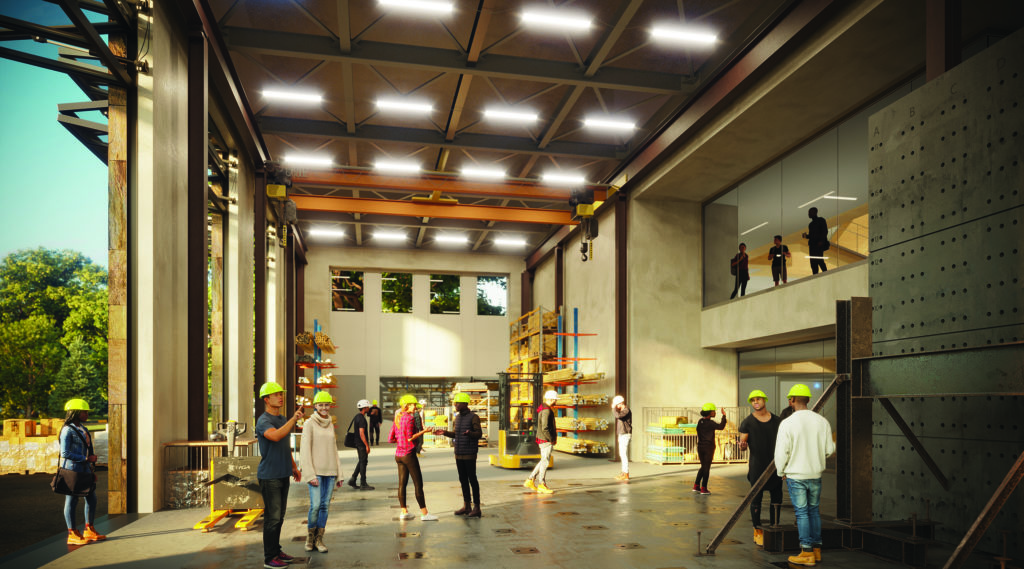
Advanced square footage dedicated to engineering
The Schoenecker Center will provide more than 60,000 square feet of new labs, classrooms, offices, and collaboration spaces transforming how the School of Engineering collaborates with partners across campus and educates students in engineering. The design of the space will increase the agility of the engineering department for course offerings and allow for more experiments in areas such as sustainability, robotics, and energy. The high bay (pictured above) will be an area for complex large-scale experimental research, student demonstrations that supplement conceptual lecture content, and student engineering design competitions. This space will provide a facility where students can see the scales in action, work with the materials as they behave in their built environment and gain an appreciation, through hands-on work, of the implications of their design choices.
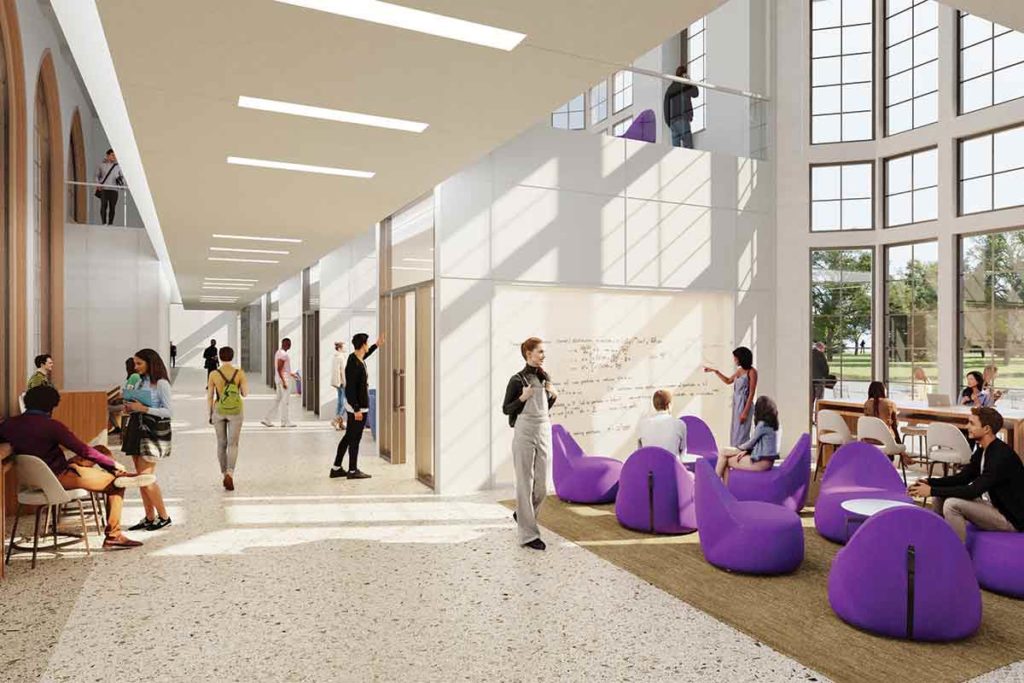
Collaborative environment with multiple disciplines, including communication and the arts
Designed with input from various corporate industry partners, the center will foster more collaboration among students who otherwise may not have worked together in a typical university setting. The facility is built to be adaptable and ready for use in several different conditions, flexible enough to continue to evolve as further emerging technologies are implemented, and supportive of student collaborations and research across campus.
The community spaces may host local K-12 schools, community gatherings and STEM and music partnerships. “When you pull together these different fields, you can tell different stories, you can invent new things,” said AnnMarie Thomas, a professor of engineering and entrepreneurship and director of the Playful Learning Lab.
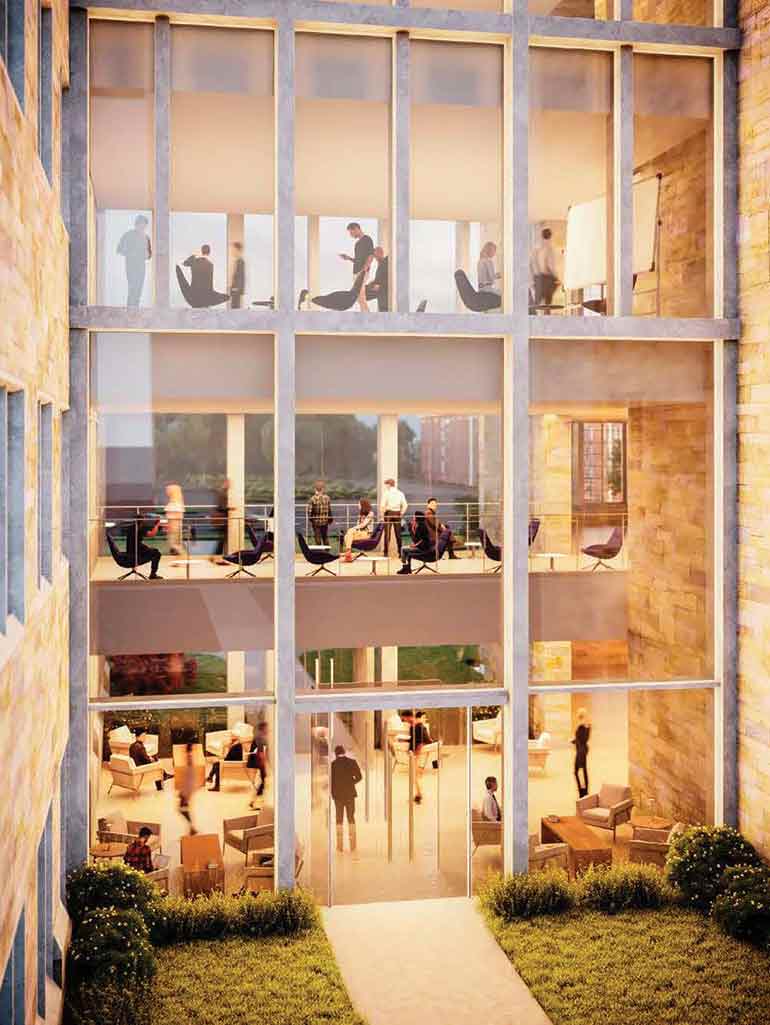
Student-centered design
The Schoenecker Center’s open floor design will put learning on display, which, in addition to the complex’s flexible collaboration spaces, will help students to grow their appreciation of other disciplines. Setting up our students to thrive in an increasingly globalized world, where employers want culturally competent workers who can appreciate and navigate diverse stories and viewpoints, is critical.
This story is featured in the spring 2022 issue of St. Thomas Engineer.
